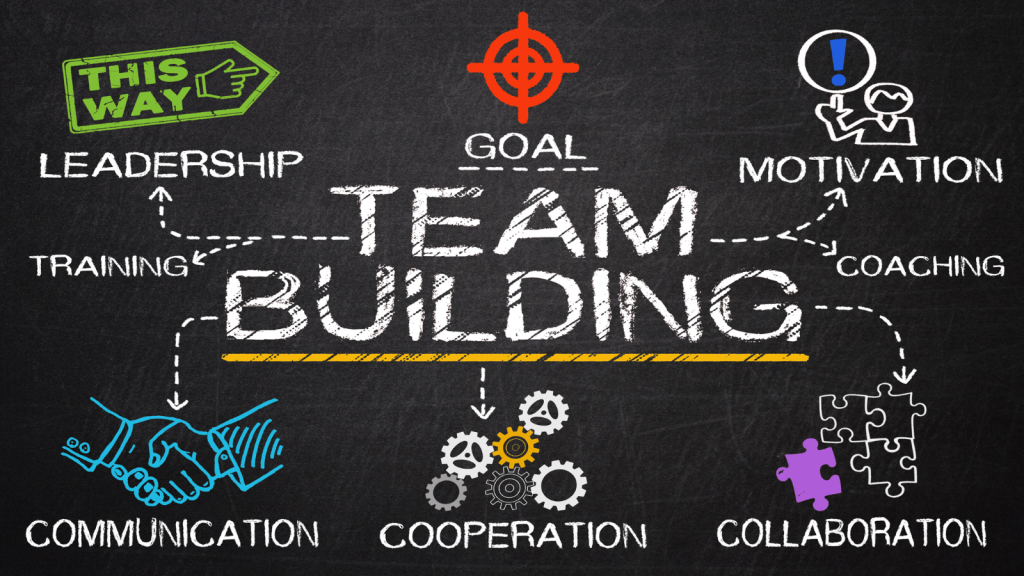Creating great content isn’t a solo endeavor. Whether you’re running a blog, a YouTube channel, or a full-scale marketing campaign, building a high-functioning content team is the key to scaling your efforts and producing consistently high-quality work. But building and managing an effective content team isn’t as simple as hiring a few writers and editors. It requires strategy, structure, and—yes—some untold tips and tricks that can help set your team up for success.
Imagine you’re the head of a fast-growing e-commerce brand. You started out writing your own product descriptions, blog posts, and newsletters. But as your business grew, you realized you could no longer juggle all of these tasks. You need a team that can handle content creation, editing, strategy, and distribution. How do you build a content team that works seamlessly together? That’s exactly what we’ll explore here.
Let’s dive in!
The Foundation of a Content Team
Before you start hiring, it’s important to understand that a content team isn’t just a group of random individuals working on various tasks. A content team works best when there’s a shared vision, defined roles, and clear communication. Here’s a simple analogy: Think of a content team like a sports team. A soccer team is made up of forwards, midfielders, defenders, and goalkeepers—all with specific roles that contribute to the overall strategy. Similarly, in a content team, each member plays a unique part in delivering value.
To build your team, first ask yourself: What does your content strategy need? Here’s a rundown of typical roles in a content team and how they work together:
Key Roles in a Content Team
-
Content Strategist A content strategist is like the coach of the team. This person is responsible for overseeing the entire content strategy, ensuring that all content efforts align with the brand’s goals. They research audience needs, determine content goals, and map out the content calendar. They also measure performance and adjust the strategy as needed.
Tip: If you’re a small business just starting out, you might wear this hat yourself in the beginning. However, as you scale, you’ll need someone who can create and execute a strategy that ties into business objectives.
-
Content Writers Writers are the backbone of any content team. These are the individuals who create blog posts, product descriptions, eBooks, and other written content. Depending on your needs, you may hire general writers or specialists (e.g., SEO writers, technical writers, copywriters).
Tip: When hiring writers, don’t just focus on writing skills—look for those who can create engaging content that speaks to your target audience’s pain points. This will pay off in the long run!
Story Time: Let’s say you’re creating a blog about sustainable living. A good writer would need to not only be an expert on eco-friendly practices but also know how to craft stories that resonate with readers. They should know how to talk about the importance of recycling in a way that feels relatable and engaging, rather than lecturing.
-
Editors Editors are your quality control. They ensure that content is polished, clear, and error-free. They are the ones who give your content its final shine before it’s published.
Tip: Editors are more than just grammar police! They also ensure that the content aligns with your brand voice and is optimized for readability and SEO.
-
SEO Specialist SEO specialists help ensure that your content ranks well in search engines and reaches its intended audience. They use keyword research, on-page SEO, and technical SEO to optimize content for better visibility.
Tip: SEO isn’t just about sprinkling keywords throughout the content. An effective SEO specialist will use Natural Language Processing (NLP) tools to create content that is contextually relevant and engaging, not just stuffed with keywords.
-
Content Designers and Visual Creators The visual side of content creation is just as important as the written word. Content designers (like graphic designers or video producers) are responsible for creating the visuals that accompany your content—whether it’s images, infographics, videos, or social media posts.
Tip: People are naturally drawn to visuals. Research shows that articles with images get 94% more views than those without. So, make sure your team includes a visual expert to complement the written content.
-
Social Media Manager A social media manager amplifies your content. They manage your social media channels, distribute content, and engage with followers.
Tip: Look for someone who understands social listening—using data to understand your audience’s preferences and pain points. This can help guide content creation and social media campaigns.
-
Content Analyst The content analyst tracks how your content is performing. They dive into metrics, such as traffic, engagement, and conversions, to evaluate the success of your content and provide insights for improvement.
Tip: Your content analyst can also provide feedback on what types of content are resonating with your audience. Are they gravitating more toward how-to guides, case studies, or product reviews? This data helps inform future content decisions.
Untold Tips for Building and Managing a Content Team
Building your content team is one thing, but managing it effectively is where the magic happens. Here are some untold tips that can help you manage your team with ease and drive better results.
1. Establish Clear Communication Channels
Clear communication is essential for any team’s success. This is especially true for content teams, where collaboration and feedback loops are frequent. Whether it’s project management tools like Trello or Asana, or communication platforms like Slack, make sure everyone has access to the tools they need to stay on the same page.
Tip: Regular check-ins and content reviews can help ensure alignment across the team. These meetings don’t have to be long, but they should serve as a time to get everyone on the same page about current priorities, upcoming deadlines, and any obstacles.
2. Foster a Collaborative, Creative Environment
Content creation requires a high level of creativity, and creativity thrives in an environment where team members feel safe to share ideas. Encourage brainstorming sessions where everyone, from the strategist to the social media manager, can contribute their thoughts.
Story Time: Let’s imagine a content team planning a campaign for a new product launch. The writer might have an idea for a blog post, the designer could suggest a visual concept, and the social media manager could propose an interactive poll to get followers involved. By working together, you not only create more diverse content but also get different perspectives that can lead to breakthrough ideas.
3. Measure Success, But Don’t Overlook the Process
While metrics like page views, engagement, and conversions are important, don’t overlook the process of content creation itself. If your team is hitting deadlines, collaborating well, and consistently producing quality work, that’s success too.
Tip: Use data not only to track content performance but also to refine your internal processes. If your team is constantly running into delays or miscommunication, the problem may not be the content itself, but how the team is working together.
4. Empower Your Team with Continuous Learning
Content marketing evolves rapidly. To keep your content team at the top of their game, encourage continuous learning. Whether it’s attending webinars, reading industry blogs, or experimenting with new content formats, investing in your team’s development pays off.
Tip: Offering training in emerging areas like Natural Language Processing (NLP), AI-driven content tools, or advanced SEO techniques can give your team an edge over the competition and help you stay ahead of the curve.
5. Give Team Members Ownership
Empower your content team by giving them ownership over certain aspects of the process. When team members feel accountable for their work, they are more likely to take pride in producing quality content.
Tip: This doesn’t mean micromanaging. Instead, give team members the freedom to own their projects while providing guidance and support. For example, your content strategist might own the content calendar, but the SEO specialist should have autonomy over keyword optimization. Trusting your team to take ownership leads to better results.
Conclusion
Building and managing a content team is not just about hiring the right people—it’s about creating a cohesive unit that works together toward a common goal. By clearly defining roles, fostering a collaborative environment, and giving your team the tools they need to succeed, you can create a content powerhouse that drives results.
The key to success lies in embracing data-driven decisions, continuous learning, and a willingness to experiment. Your team isn’t just creating content—they’re crafting stories, shaping brand narratives, and ultimately helping your business grow.
Ready to build your dream content team? It’s time to take the first step toward creating a team that not only produces amazing content but also delivers measurable success.

